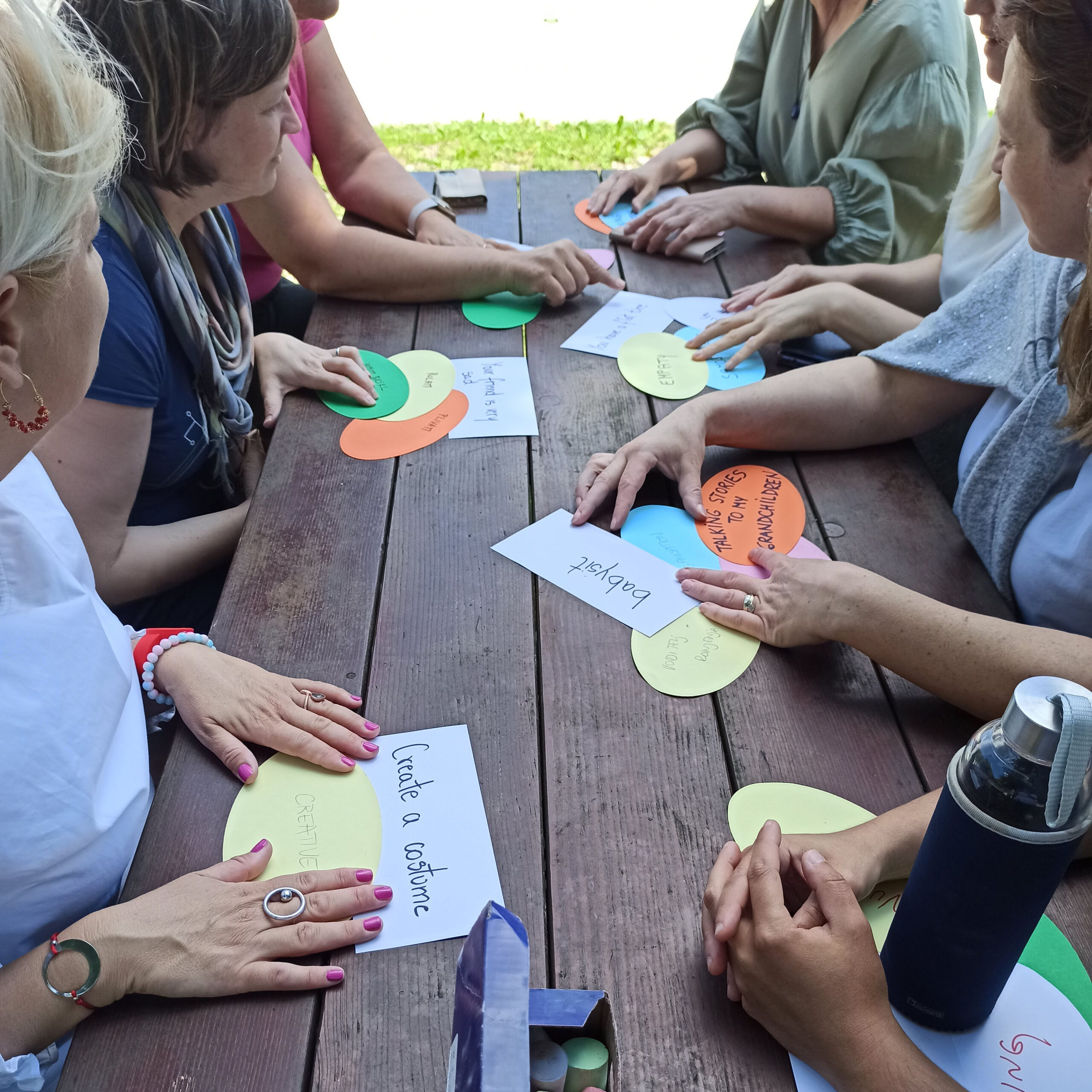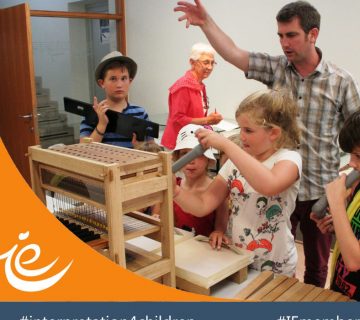A new Interpret Europe training module is almost ready to launch.
It is finally time to talk about and showcase what I have been thinking about (for the last three years), what we have been working on (with an IE focus group) and have now tested (on three separate occasions); ‘Interpretation for children’, a new module in the IE training programme.
Let’s start at the very beginning
A very good place to start
I would not say I am Julie Andrews, magician with children. But I have dedicated part of my professional career to developing programmes for children and leading them. After I became an IE trainer, I started to implement the IE quality standard into my programmes. When looking back, a lot of what we incorporated into our programmes came spontaneously, but spontaneity is not the best training policy, so the goal was to develop an IE philosophy-based methodology that would help individuals who develop and lead interpretation for children to have a structure that they could follow.
So after around two years of toying with the idea of creating a course and hinting about it several times to IE management and training coordinator, I finally said (to myself) enough is enough and invited IE members to join a group that would support the development, having agreed that we would develop a training module rather than a full course on this topic. We were a colourful group at our first zoom meeting where we discussed first of all who do we perceive as children, what should interpretation for children offer and, the most important bit, what should an IE training module offer to the professionals who work with children.
Meetings with the group helped me structure the mess that were my thoughts and a fixed deadline for the test run really got things moving. It was interesting to hear different perspectives from different members of the group but the IE training philosophy helped us to stay on track. After the preliminary meetings where the structure was set, I got down to the task of bringing it together. Putting it in time frames, shortening all the ideas for a full course into a 16-hour training module, developing exercises based on the goals we had established in the meetings and presentations where I enlisted help from other members of the group. We realised that 16 hours is not enough to touch on every imaginable topic related to interpretation for children, and two especially gave us food for thought: What do we do with interpretation for families (with children) and youth? We decide we would do an introduction to the topic. Group members Barbara Struys (looking at HI for families) and Iva Čaleta Pleša (looking at interpretation for youth) prepared presentations that offer a short overview of the topics that could/should have a module of their own.
Testing phase
When I had (almost) everything ready on paper it was time to test it in practice. On a beautiful June weekend we held our first run of the workshop ‘Interpretation for children’ in the open air museum in Rogatec, Slovenia. The group was a good mix of IE group members and people who were not involved in the development of the module. For the very first run it went well with quite a lot of on site changes to the programme that (probably) were not all that visible to the participants and some hiccups when an exercise sounded straightforward on paper but when we started giving instructions we saw that it was overcomplicated.
The second time I tested the workshop I had several new challenges. The programme had been tested but on previously IE trained participants and in English. So in January this year I did another run on a full group of 16 museum pedagogic officers/curators and in Slovenian language this time. Only a few of the participants had any previous experience of IE training. The programme ran even smother with the changes I made based on the first run and I had great luck that our managing director – also an IE trainer – had time to attend and give me her very valuable insight and comments.
Since then, I have run the workshop one more time, with some more changes and adaptations, some of which work well and others not so much. Sometimes you just want to be too clever and over-complicate the simple but effective tools.
Comparing the first and the second group, I would say that the main difference was in understanding what universals are and how we can use them in heritage interpretation. The first group of mainly IE trained participants had it covered but maybe lacked in the didactic/activity phase of the development of Interpretation for children compared to the second group where it really showed from their combined experiences of working in pedagogic programmes on some of the biggest heritage sites in Slovenia.
All the groups struggled with sticking to the structure and phases. We all want to go to the final activities and not spend too much time with the uniqueness of our heritage, universals and working on themes; these elements being less fun, I guess.
So I was really happy that I took the time on the third run to be a part of a group and be a bit pushy to follow the structure to the letter. And what would you know, we went from a fixed idea, back to heritage and its uniqueness to developing a theme and then the theme lead our activities. We spent 60% of our time on the first phase and relatively very little on what activities we will do, since we had a lighthouse and just had to follow it.
On the third run (that was done in my home town) we were deeply on our own turf so we were able to invite the strictest of evaluators (our children) and I write this with great pleasure that we were successful in making it fun but also meaningful, because we were able to convey to 4-6 year olds that we don’t just drink water, but we also use it to make things, like pottery.
What is next?
The programme of this 16-hour module will be finalised and prepared for IE trainers in the next couple of months and then it will be ready to be spread Europe-wide with the help of our network. It feels good to be able to say that it is done and tested and waiting for all the enthusiasts who want to inspire enthusiasm for heritage in the next generation with the help of tools we have prepared for you.
Janja Sivec is an IE trainer and full-time interpreter from Slovenia. If you want to get in touch write to: janja.sivec@dlegende.com.
To cite this article: Sivec, Janja (2023) ‘If it works for children … how the module on interpretation for children came about’ in Interpret Europe Newsletter 1-2023, pg. 8-9.
Available online: https://interpret-europe.net/wp-content/uploads/2023/03/PDF-Newsletter-2023_1-spring.pdf



